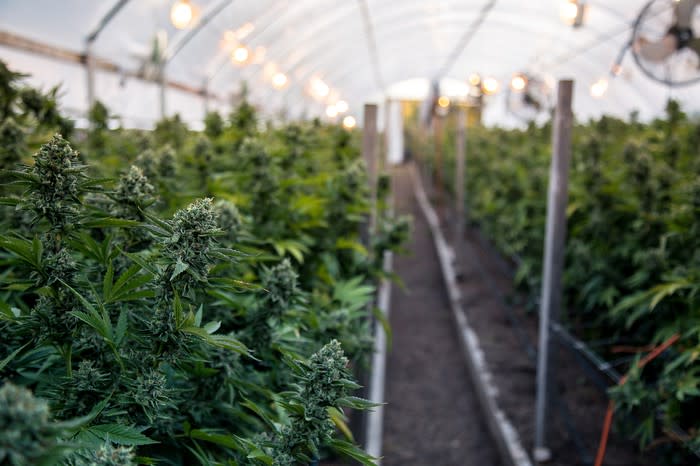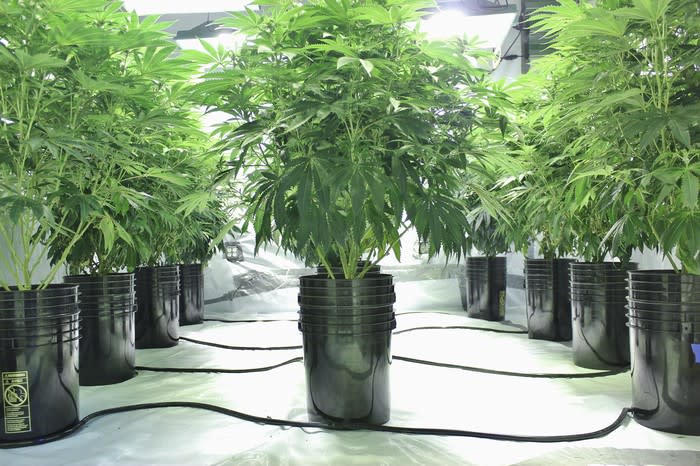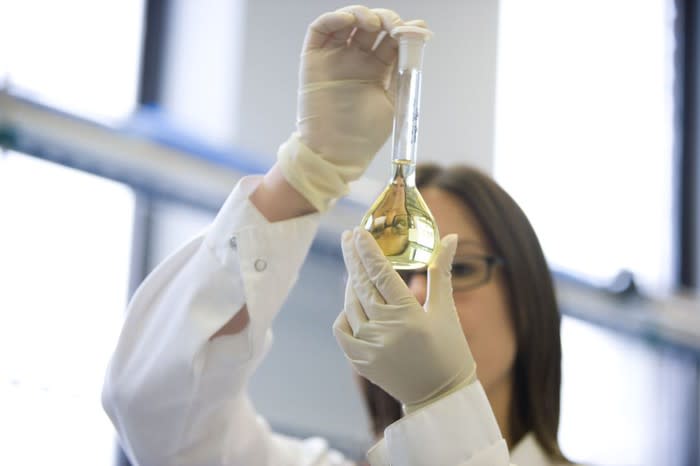5 Ways to Invest in the Marijuana Craze With Ancillary Stocks
To a number of Wall Street pundits, the marijuana industry is the greatest thing since sliced bread. After delivering $10.9 billion in legal worldwide sales in 2018, the global pot industry could see sales soar to $200 billion in a decade. For those curious, that's a cool compound annual growth rate of 34%, which is something investors are used to seeing with the rise of cutting-edge technology, and not the legalization of a plant.
But the ongoing maturation of the marijuana industry has also exposed weaknesses. Cannabis stocks have dramatically underperformed the broader market for nearly five months, with persistent supply issues in Canada and a resilient black market in recreationally legal U.S. states mostly to blame. This has caused most direct marijuana players -- i.e., growers and retailers that actually touch the plant -- to get walloped.

Image source: Getty Images.
However, the long-term future does look bright for the green rush, although there may be smarter ways to invest in the cannabis craze without exposing yourself to the wild vacillations associated with direct players. There are a number of ancillary industries that will be vital to the success of the legal pot industry that offer investors a potentially safer and more attractive investment opportunity. Here are five ways you can get in on the green rush with ancillary stocks.
1. Buy a packaging or branding solutions company
For starters, investors can get in on the cannabis craze by considering a packaging and branding solutions company like KushCo Holdings (OTC: KSHB). Because every country, province/state, or locale can have different laws regarding packaging compliance, KushCo works with growers to ensure that their product meets all regulations. And since most packaging can contain only small amount of branding, KushCo also works with growers to ensure their packaging stands out in an increasingly crowded landscape throughout North America.
It's worth noting that KushCo does more than just supply compliant packaging solutions. It also supplies hydrocarbon gases and solvents to the industry, which are critical in the respective production of cannabis oils and concentrates, and it generates the bulk of its revenue for now by selling vaporizers. Therefore, KushCo gives investors multiple ways to benefit from the rise of cannabis accessories, high-margin derivatives, and global weed sales growth.

Image source: Getty Images.
2. Consider real estate investment trusts
Investors might also want to consider a cannabis real estate investment trust (REIT) like Innovative Industrial Properties (NYSE: IIPR). As with any REIT model, the idea is to acquire land and assets in a very specific industry or sector, then lease these assets out for an extended period of time, thereby reaping the rewards of rental income. In Innovative Industrial Properties' case, the number of properties it owns has more than doubled since the year began. Having ended 2018 with 11 properties, it now owns 27 properties in a dozen states.
According to the company's latest update, it's generating a current yield on invested capital of 14.5%, meaning it'll have a complete payback of its investments in less than five years. More impressive, the weighted-average length of its remaining leases is 15.5 years, meaning it'll be generating predictable cash flow for a long time to come. And, as the icing on the cake, Innovative Industrial Properties passes along a 3.25% annual rental increase to its lessees, thereby bolstering its topline with modest organic growth.

Image source: Getty Images.
3. Don't forget about nutrient and lighting solution-focused companies
With so much cannabis being grown in legal markets, another smart way to play the green rush is by focusing on businesses that improve crop yields. One important name that comes to mind is Scotts Miracle-Gro (NYSE: SMG).
Although you probably know Scotts Miracle-Gro best for its lawn and garden products, the company's subsidiary, Hawthorne Gardening, could bring in as much as 20% (or more) of Scott's annual revenue in the not-so-distant future. Hawthorne provides hydroponic growing equipment (i.e., growing plants in a nutrient-rich water solvent, as opposed to soil), and also supplies growers with nutrient, soil, and lighting solutions. Last year, Hawthorne's attraction to small-and-medium-sized pot businesses grew significantly with the $450 million cash-and-stock acquisition of Sunlight Supply.
It should be noted that Scotts Miracle-Gro's subsidiary does have some very minimal hands-on work with cannabis, too. Hawthorne is working side-by-side with ultra-premium grower Flowr to boost crop yields at Flowr's Kelowna campus in British Columbia. The two companies are testing out various soil, lighting, and genetic solutions in an effort to improve crop yield to 400 grams per square foot by 2022. For context, most growers are expected to produce between 75 grams and 125 grams per square foot.

Image source: Getty Images.
4. Look at extraction-services providers
Arguably the most intriguing way to play the ancillary marijuana market might be to purchase extraction-services companies. Extraction providers take cannabis and/or hemp biomass and extract the resins, distillates, or cannabinoids desired by growers to create high-margin derivative products. As a reminder, Canada is set to have derivative products hit dispensary shelves by mid-December.
For example, Neptune Wellness Solutions (NASDAQ: NEPT) aims to be a go-to third-party extraction service throughout North America. Neptune's Canadian subsidiary has 200,000 kilos of yearly run-rate capacity, with the company's recent acquisition of SugarLeaf soon giving the company up to 1.5 million kilos of run-rate extraction capacity in the United States. Neptune Wellness wound up landing three-year extraction deals with Tilray and The Green Organic Dutchman in June that'll be good for 125,000 kilos and 230,000 kilos, respectively, in aggregate cannabis and hemp biomass over the life of their agreements.
The reason extraction is especially exciting in the U.S. is that growth in cannabidiol (CBD)-based products could average more than 100% per year through 2023. That makes extraction-service providers with access to the U.S. market (ahem, Neptune) especially golden.

Image source: GW Pharmaceuticals.
5. Add a cannabinoid-based drug developer
Lastly, investors could get in on the marijuana craze by purchasing a cannabinoid-based drug developer, with the most obvious choice being GW Pharmaceuticals (NASDAQ: GWPH). GW Pharmaceuticals is currently the only company to have a cannabis-derived drug approved by the U.S. Food and Drug Administration.
Though GW Pharmaceuticals has two approved cannabis-derived products, one, Sativex, isn't approved in the United States. However, oral CBD-based drug Epidiolex worked wonders on reducing seizure frequency in patients with two rare types of childhood-onset epilepsy. During the second quarter, GW Pharmaceuticals reported that net sales of Epidiolex soared to $68.4 million, more than doubling the $33.5 million in the sequential first quarter. With over 12,000 patients receiving Epidiolex since its early November launch, the company would appear to have a hit on its hands.
GW Pharmaceuticals also has a pretty extensive pipeline focused on cannabinoid-based medicines (as well as expanding Epidiolex's label). For instance, Sativex is being tested for spasticity associated with multiple sclerosis in the U.S., GWP42006, a cannabidivarin-based compound, is being looked at for autism spectrum disorders and epilepsy, and Epidiolex could be expanded to treat tuberous sclerosis complex and Rett syndrome.
Suffice to say that there are numerous ways to play the budding cannabis space without buying into companies that come in direct contact with the cannabis plant.
More From The Motley Fool
Sean Williams owns shares of KushCo Holdings. The Motley Fool recommends Innovative Industrial Properties and KushCo Holdings. The Motley Fool has a disclosure policy.
This article was originally published on Fool.com
